Museo de la Catedral
El museo, creado como espacio arqueológico, se localiza en las dependencias del claustro, la Capilla de las Reliquias, el Panteón Real y el Tesoro.
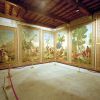
Museo do Pobo Galego
Fundado en 1977, el museo se adscribe al campo de la antropología cultural y en él se reúnen las diversas manifestaciones de la cultura tradicional de Galicia. En la iglesia se encuentra el Panteón de Galicia.
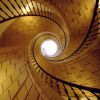
Museo de la Magia de Galicia
El Museo de la Magia de Galicia es un espacio pionero concebido para preservar, divulgar y celebrar el patrimonio mágico gallego a través de un recorrido repleto de historias, objetos e ilusiones. Dirigido por el gestor cultural Eloy Fernández, el museo aspira a convertirse en el gran referente del ilusionismo en Galicia y un motor cultural para Compostela
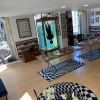
Museo de las Peregrinaciones y de Santiago
El museo refleja la trascendencia que para la cultura europea y de América tuvieron las peregrinaciones a Santiago, a través de diversas salas temáticas en las que se exhiben representaciones del Apóstol Santiago, objetos de peregrinos de todas las épocas, y otros tesoros relacionados con el culto jacobeo. Desde el gran lucernario de la segunda planta puede contemplarse la basílica compostelana con su impresionante torre de la Berenguela y gran parte del casco histórico.
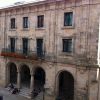
CGAC (Centro Galego de Arte Contemporánea)
Diseñado por el portugués Álvaro Siza, el CGAC muestra las principales tendencias del arte de los últimos años.
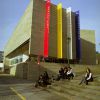
Museo Centro Gaiás
Referente arquitectónico del nuevo siglo. El museo acoge grandes exposiciones temporales.
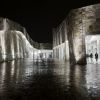
Monasterio e Iglesia de San Martiño Pinario
Destacan los fabulosos retablos barrocos, las sillerías del coro, una de ellas procedente de la Catedral, y la colección visitable, con interesantes esculturas, objetos litúrgicos, grabados y otras piezas de gran valor.

Museo-Fundación Eugenio Granell
A través de la obra y del legado que Granell dejó a Santiago de Compostela y a Galicia, su fundación intenta mantener viva la esencia de las diferentes formas de expresión surrealista.
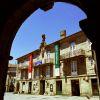
Casa de la Troya
Esta casa-museo reproduce el ambiente de una pensión estudiantil de finales del s. XIX, siendo su referente literario la pensión de la novela La Casa de la Troya, de Pérez Lugín.
Museo de la Colegiata de Sar
Localizado en la iglesia románica de Sar, alberga piezas de gran valor histórico y documental. Conserva objetos litúrgicos del siglo XVIII y una serie de piezas del antiguo claustro románico, obra del Maestro Mateo.
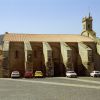
Museo de Tierra Santa
A través de piezas traídas de Tierra Santa, este museo ofrece un recorrido por la historia de los lugares santos que se describen en la Biblia, desde el Paleolítico hasta la actualidad.
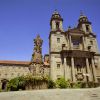
Museo de Arte Sacro
Alberga algunas de las piezas más relevantes y representativas del patrimonio del monasterio benedictino de San Paio de Antealtares, desde el siglo I al XIX, así como el Ara de Antealtares.

Museo de Historia Natural de la Universidad de Santiago
Expone colecciones de zoología, botánica y geología, con ejemplares procedentes de Galicia y de otros puntos del planeta. Destaca la colección Haüy, que ilustra el inicio de los estudios cristalográficos.
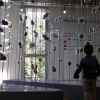
Colección del Colegio Médico
Localizado en la facultad de Medicina de Santiago, este pequeño museo monográfico nos muestra en sus vitrinas el antiguo instrumental utilizado en la especialidad médica de anestesiología.
Mupega (Museo Pedagógico de Galicia)
Su objetivo fundamental es recuperar, proteger, mostrar y difundir el rico patrimonio educativo de Galicia. A lo largo de tres plantas se muestra la evolución de la escuela gallega a través del tiempo